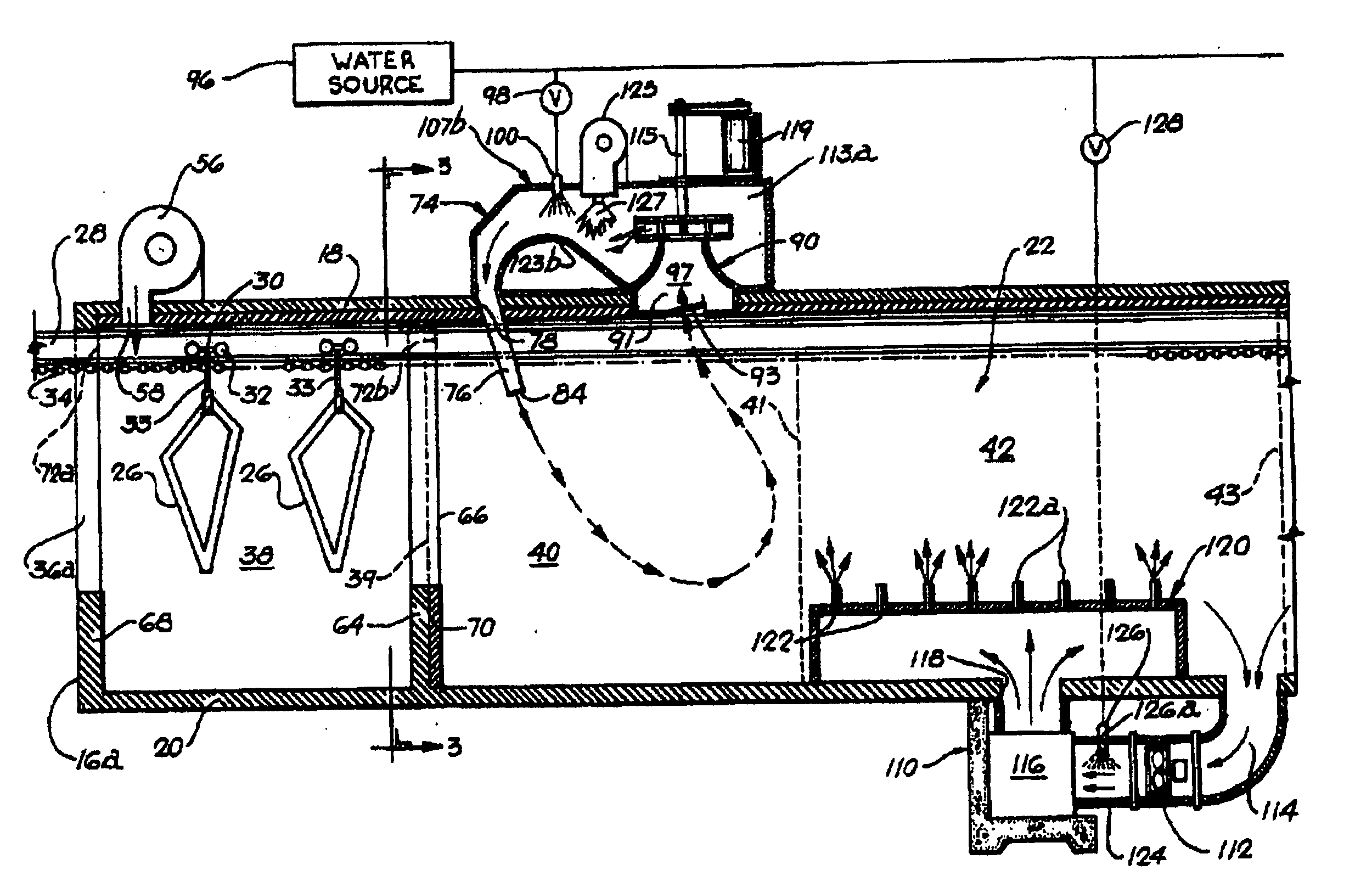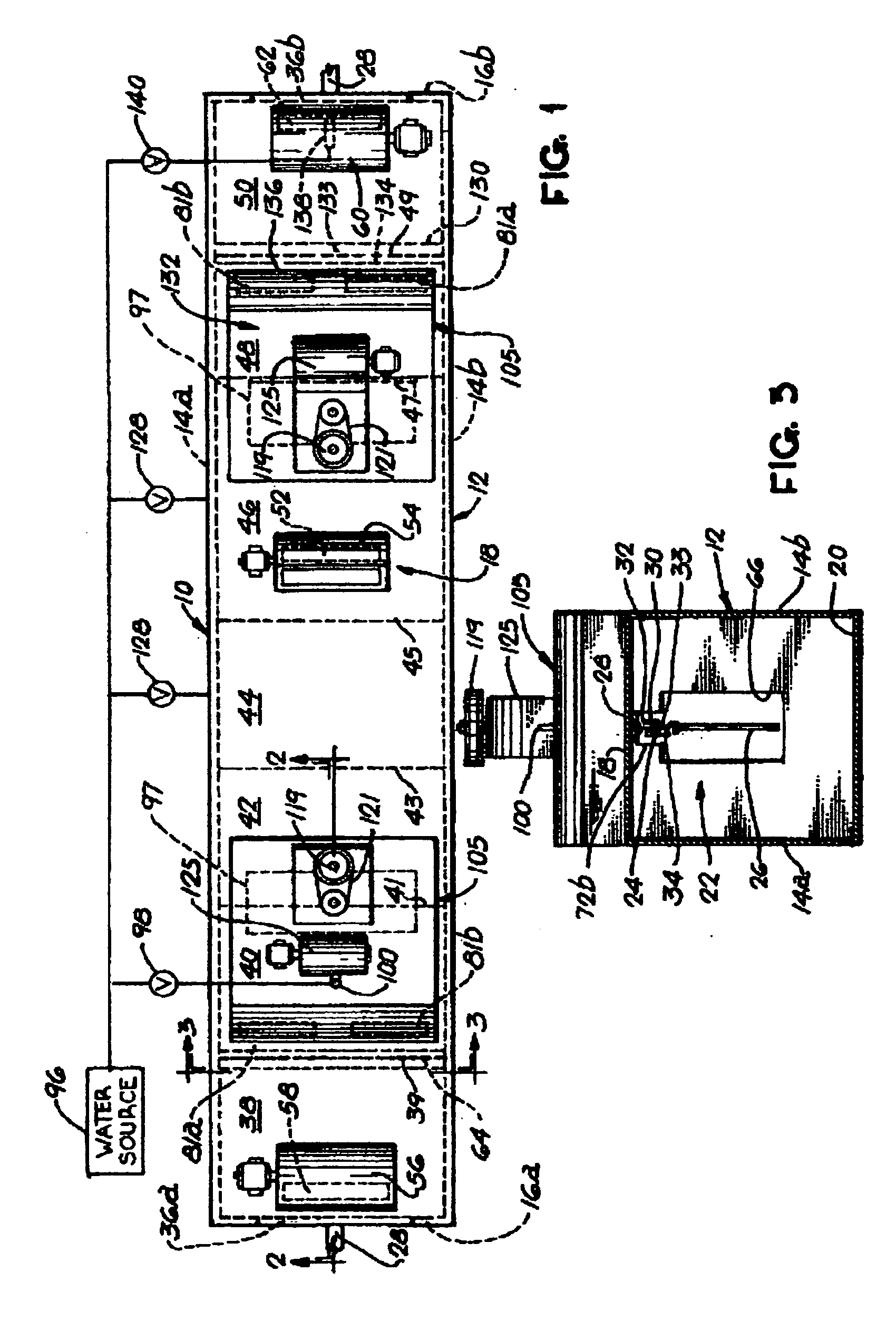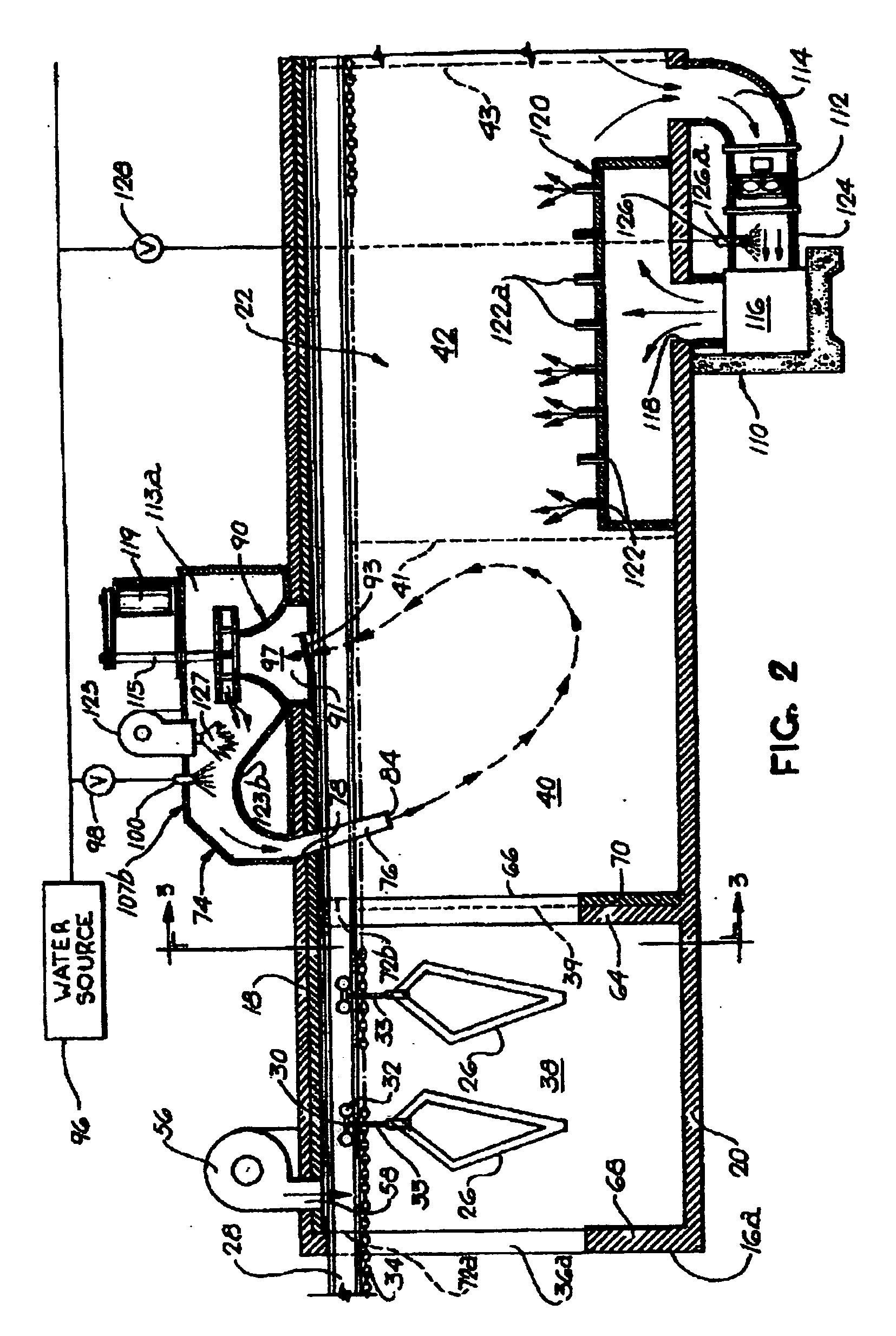Pyrolysis methods and ovens therefor
- Summary
- Abstract
- Description
- Claims
- Application Information
AI Technical Summary
Benefits of technology
Problems solved by technology
Method used
Image
Examples
Embodiment Construction
[0023]FIGS. 1 through 5 illustrate an oven 10 suitable for performing the pyrolysis methods which has an enclosure 12 formed by a pair of elongated side walls 14a and 14b, a pair of end walls 16a and 16b, a top wall 18 and a bottom wall 20. The walls of the enclosure 12 form an elongated linear processing chamber 22 with a rectangular cross section for receiving and treating surface coated articles 26.
[0024] The oven 10 is provided with a conveyor 24 to carry a continuous series of articles 26 into and through the elongated chamber 22. The conveyor 24 has an elongated rail 28 which extends through the chamber 22 and is mounted centrally on the underside of the top wall 18 of the enclosure 12. The rail 28 is disposed perpendicular to the end walls 16a and 16b, and supports a series of carriages 30 spaced apart along the rail. Each carriage 30 is mounted on the rail 28 on rollers 32 which are adapted to roll along the rail 28. Each carriage 30 includes a depending hanger 33 for remov...
PUM
| Property | Measurement | Unit |
|---|---|---|
| Temperature | aaaaa | aaaaa |
| Temperature | aaaaa | aaaaa |
| Temperature | aaaaa | aaaaa |
Abstract
Description
Claims
Application Information
 Login to View More
Login to View More - R&D
- Intellectual Property
- Life Sciences
- Materials
- Tech Scout
- Unparalleled Data Quality
- Higher Quality Content
- 60% Fewer Hallucinations
Browse by: Latest US Patents, China's latest patents, Technical Efficacy Thesaurus, Application Domain, Technology Topic, Popular Technical Reports.
© 2025 PatSnap. All rights reserved.Legal|Privacy policy|Modern Slavery Act Transparency Statement|Sitemap|About US| Contact US: help@patsnap.com



